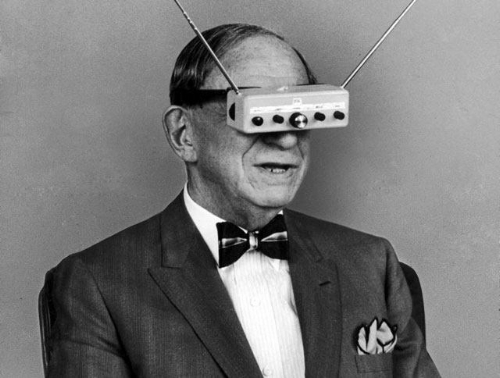Tuesday’s event at the NYU Data Future Lab was another great success for the New York chapter of the VR/AR Association. The night began with esteemed media consultant and start-up veteran Chris Pfaff of Chris Pfaff Media/Tech LLC giving a primer on augmented reality, as well as the various channels through which it is presently operating and through which it is anticipated to operate. Naturally, Niantic’s Pokémon Go was a point of discussion; the breakout mobile game’s AR capability has been and continues to be debated amongst developers and academics. The debate itself is testament to the embryonic state of AR in the present age. It is for this reason that Pfaff’s basic definition of the technology — the layering of digital sensory information over reality — was both appropriate and necessary.
Blippar's Ariff Quli operated under the same premise of “technological infancy”. Through his presentation, the notion of “everything around us [being] a new channel” was truly realized. A live on-site demo showed attendees the capabilities of machine learning not only for commercial spheres such as marketing and retail, but for education as well. From the anthropomorphization of a Coke bottle and the simulated exploration of the inside of a Jaguar XJR to the flight of virtual butterfly, born from the margins of a 2D drawing. As advanced as the beta was, future iterations will only become more developed, more accessible, smarter. That is to say, the future of visualization through AR, in industry and education, is promising.
This was reaffirmed by Diego Florentin of Squadability, whose insistence on AR’s potential beyond entertainment and advertising was particularly emotive. As might be expected, he touched on the Internet of Things and how our everyday lives will be suffused with AR technology. For instance, the implementation of AR technology for the sake of affecting change toward the minutiae of our activities, our sports, our fashion, even our transportation systems. Imagine the ability to drive and not only hyper-visualize the things that lie before you and your immediate area but to also preemptively organize and navigate any route, all without having to look away from the road and down at your phone. Florentin ended his presentation with a call to action, to think bigger and to disrupt.
Oskari “Ozz” Häkkinen of Futurefly directed us toward the more gaming-oriented path that lies in AR’s future. However, he also introduced us the recently launched RAWR, a messenger app operating through the interaction of personalized 3D avatars that are responsive to a myriad of terms and emojis, denoting the weather, setting, and even physiology of the avatars themselves. Particularly interesting is that the avatars do not stay confined to the tiny world within the messenger app but can be superimposed onto our own rooms and surroundings.
The night continued with Ixonos’ Ted Iannuzi, whose technological endeavors predate the commercial implementation of VR and AR, but not necessarily their conception. Iannuzi’s talk began with the literature and ideas within that literature that inspired him — Popular Science, Popular Mechanisms, science fiction comics. He presented a pre-Internet world, imagination as the driving force behind emergent technologies, whose linear history trace back from TV Googles in 1963 to a holographic ATM that transcends physicality.
And with the remembrance of a pre-Internet world came the contemplation of a post-Internet one. Our Q&A session brought forth a important question concerning the standardization of AR technology, of a forthcoming reality that is increasingly softening borders that once stood so resolute between the physical and the virtual. What to call this new term of art and design, of new forms of engagement? “Sensorama…” quipped Iannuzi.


